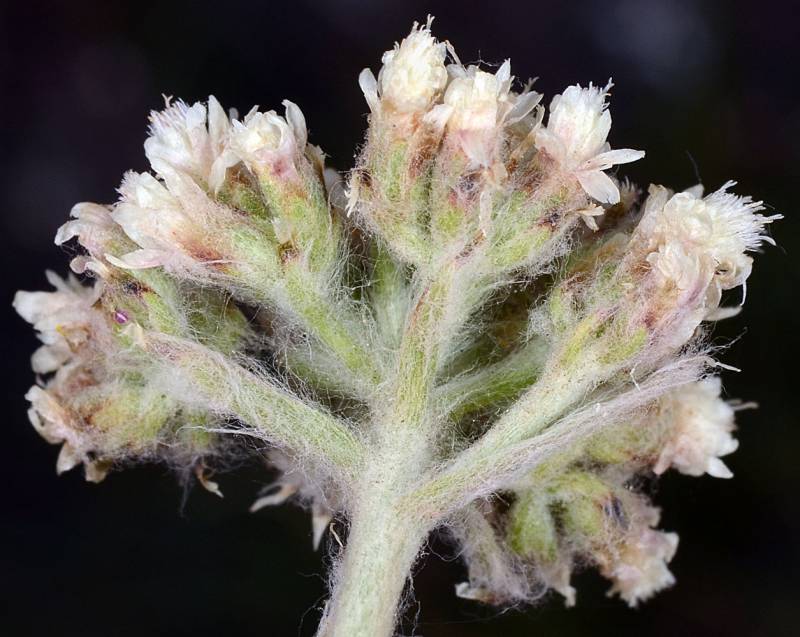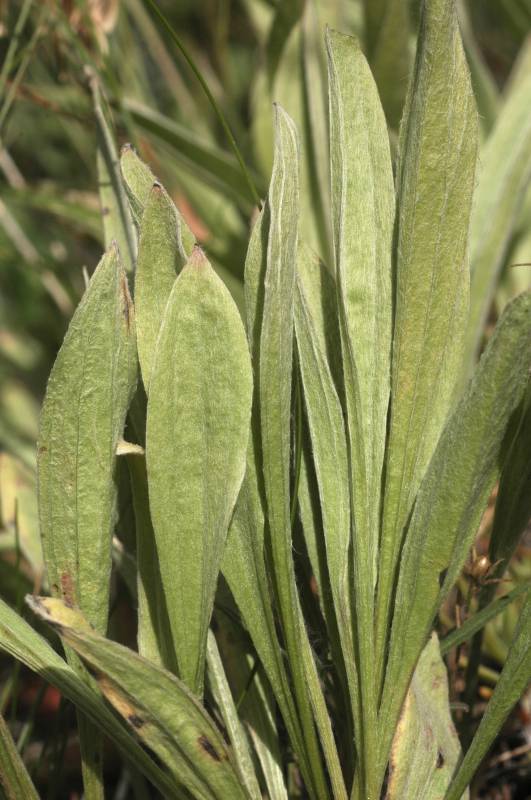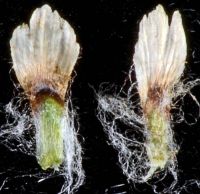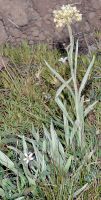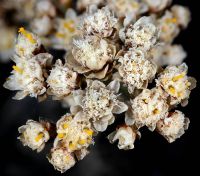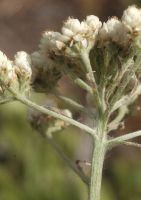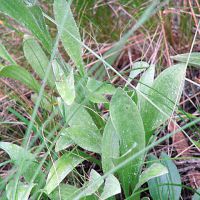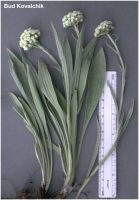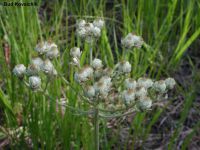Distribution: Occurring chiefly east of the Cascades crest in Washington; British Columbia, including southern Vancouver Island, to Oregon, east to Sasketchewan, Montana, Colorado, and Nevada.
Habitat: Grassy hillsides, open woodlands, and ponderosa pine forest openings from the foothills to middle elevations in the mountains.
Flowers: June-July
Origin: Native
Growth Duration: Perennial
Conservation Status: Not of concern
Pollination: Apomixis, butterflies, flies, wasps
Robust perennial without rhizomes, white-woolly throughout, 2-5 dm. tall.
Basal leaves numerous, white-woolly on both sides, up to 15 cm. long and 2 cm. wide; cauline leaves linear, progressively reduced upward.
Heads many in a broad, compact inflorescence; pistillate involucres 5-8 mm. high; the scarious upper portion of the bracts wholly white, the lower portion densely pubescent, white, commonly with a small dark spot at the base.
Achene terete
The similar A. lanata grows at higher elevations, is a smaller plant, and the scarious portion of the involucre bracts is dark. A. luzuloides has involucre bracts that are scarious to the base, the lower portion pale greenish-brown.
Publication: Mem. New York Bot. Gard. 1: 409. 1900.
Antennaria pulcherrima (Hook.) Greene ssp. anaphaloides (Rydb.) W.A. Weber
Antennaria pulcherrima (Hook.) Greene var. anaphaloides (Rydb.) G.W. Douglas
PNW Herbaria: Specimen records of Antennaria anaphaloides in the Consortium of Pacific Northwest Herbaria database.
WA Flora Checklist: Antennaria anaphaloides checklist entry.
OregonFlora: Antennaria anaphaloides information.
E-Flora BC: Antennaria anaphaloides atlas page.
CalPhotos: Antennaria anaphaloides photos.
USDA Plants: Antennaria anaphaloides information.

